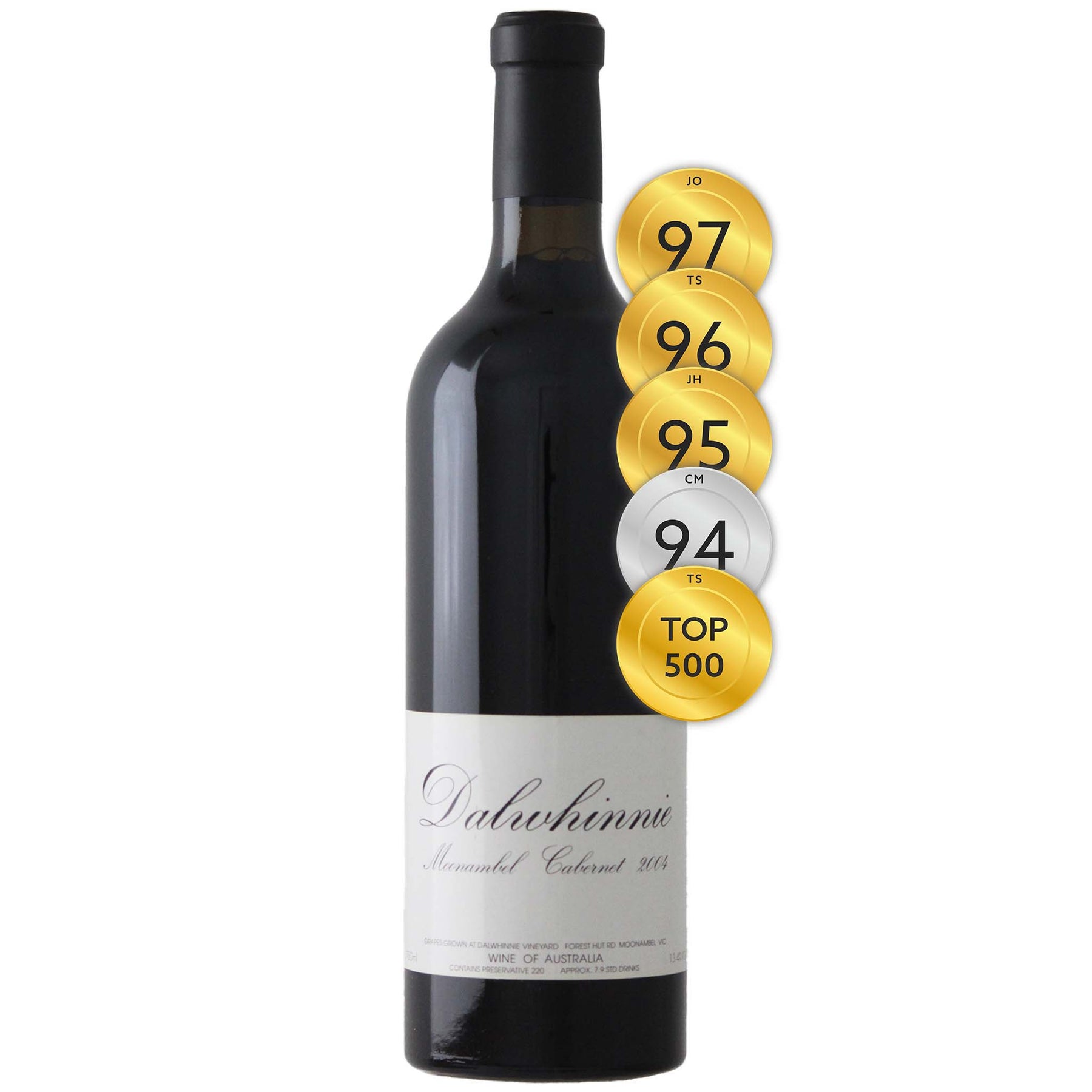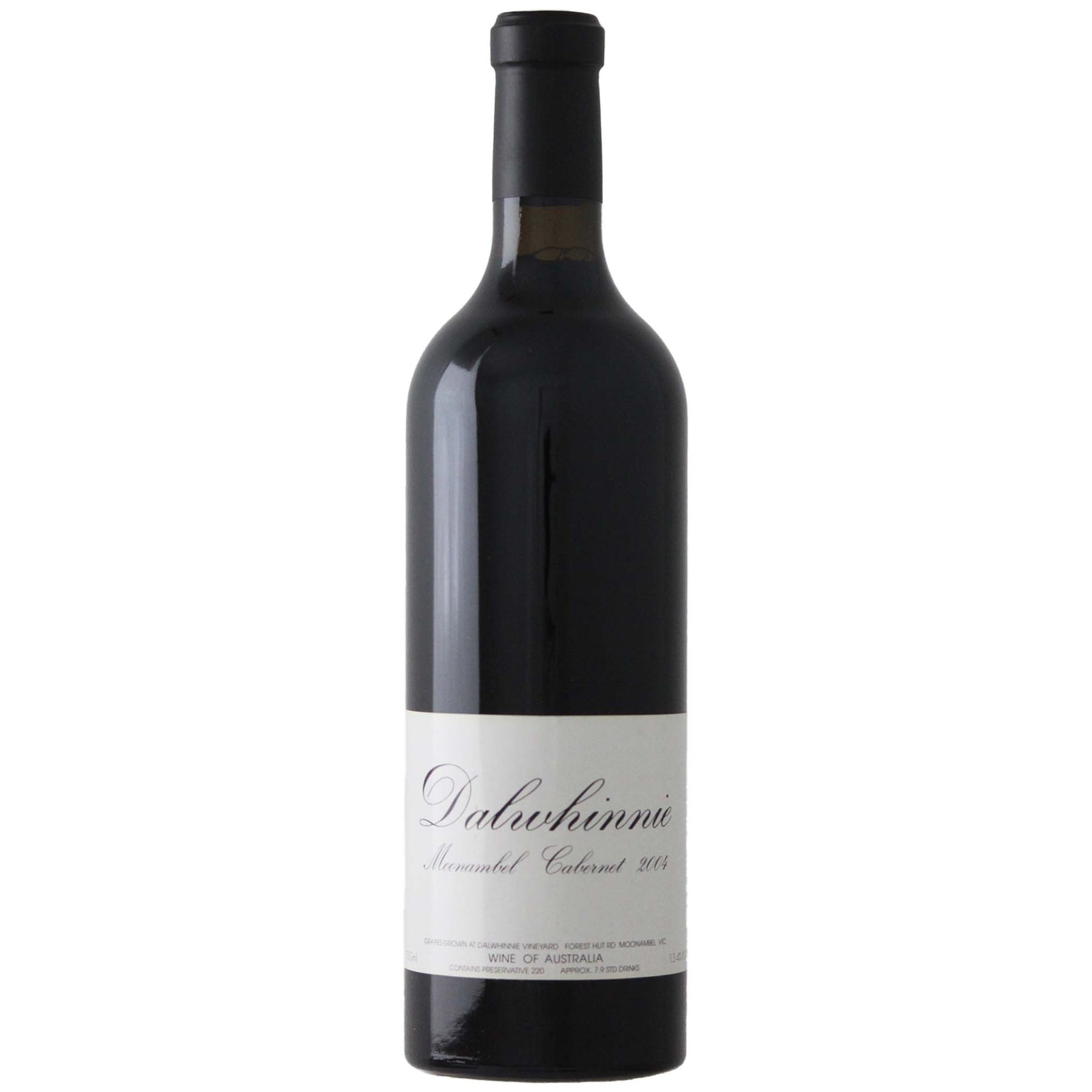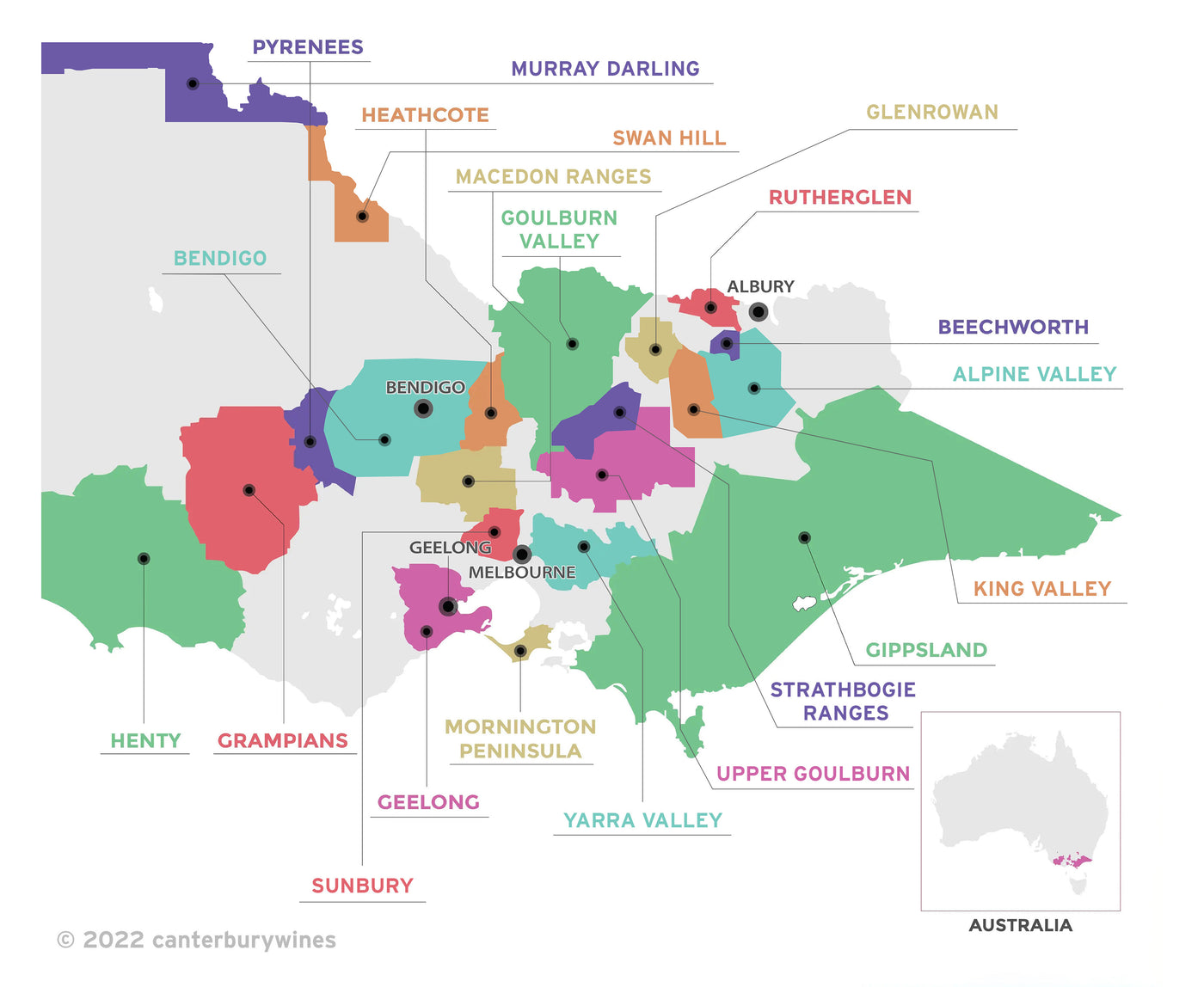

Dalwhinnie Moonambel Cabernet Sauvignon 2004
Style: Red Wine
Closure: Cork
Dalwhinnie Moonambel Cabernet Sauvignon 2004
Warehouse
34 Redland Drive
Vermont VIC 3133
Australia
Critic Score: 97
Alcohol: 13.4%
Size: 750 ml
Drink by: 2025
Tyson Stelzer Top 500 Wines of 2005-2006
Dalwhinnie, located near the small village of Moonambel in the heart of the Pyrenees region of western Victoria, is one of Victoria's oldest family-run vineyards. Dalwhinnie has been growing grapes for nearly 50 years and the 16-hectare vineyard is now fully mature. At 595 metres above sea level, Dalwhinnie is the highest and most remote of the Pyrenees district vineyards. The vineyard is located in a naturally undulating trough which falls away from the hills, forming an amphitheatre nestled into the ranges.
"The further I get into this wine, the more it impresses me. The palate absolutely dances with fresh, juicy red currants, red cherries and leaf with hints of savoury spice and bitter dark chocolate oak. Then time freezes as the tannin structure begins to reveal itself. An exquisitely glorious bed of fine-as-paper, mouth-filling tannins linger on a never-ending finish. These are some of the most amazing tannins that I have ever encountered. This wine easily ranks among the greatest Dalwhinnie Cabernets of all time. I guess you might say that it's a 'once in a lifetime wine.'" Tyson Stelzer
"Dalwhinnie wines have tremendous depth of flavour, reflecting the relatively low-yielding but well-maintained vineyards. The vineyards are dry-grown and managed organically, hence the low yield, but the quality more than compensates." James Halliday
Expert reviews
"A superb cabernet whose deep and pure expression of spotless varietal fruit is handsomely partnered by finely handled oak and supported by a classically firm and powdery spine of drying astringency. Its heady bouquet of cassis, small red berries, plums and mulberries is backed by dusty cedar/vanilla oak against a faint background of black olives, mint and menthol. Long and grainy, it's sumptuous and deeply layered, revealing intense and complex dark fruits with dusty suggestions of dried herbs and cedar. Beautifully complete, balanced and very stable; set for the long term. Drink 2016-2024+." Jeremy Oliver - 97 points
"A brief note in David Jones' handwriting accompanied the latest Dalwhinnie samples. 'Hope you enjoy the '04s as much as we do. They are probably once in a lifetime wines.'
The further I get into this wine, the more it impresses me. The bouquet leads off with ripe black currants and cassis, with hints of leaf and minerally granite complexity, opening up to complex nuances of ginger, spice and capsicum, with suggestions of candied orange zest. The palate absolutely dances with fresh, juicy red currants, red cherries and leaf with hints of savoury spice and bitter dark chocolate oak. Then time freezes as the tannin structure begins to reveal itself. An exquisitely glorious bed of fine-as-paper, mouth-filling tannins linger on a never-ending finish. These are some of the most amazing tannins that I have ever encountered. This wine easily ranks among the greatest Dalwhinnie Cabernets of all time. I guess you might say that it's a 'once in a lifetime wine.' Best drinking around: 2009-2019." Tyson Stelzer, Top 500 Wines of 2005/2006 – 96 points
"A delicious medium to full-bodied, but silky smooth and supple, palate. Blackcurrant and cassis, high quality oak, and fine, ripe tannins. 13.4º alc. Drink Now - 2019." James Halliday, Halliday Wine Companion - 95 points
"I have no doubt that this is the best Dalwhinnie cabernet that I've tasted. It's fleshy and soft and intriguing, with sour, blonde tobacco on blackcurrant and mulberry, and a dry, juicy length with lingers with ease. This tastes every bit like a great season, made by the most careful of hands. Proprietor David Jones should be proud of it, and so too should the winemaker involved: Kate Goodman. Drink: 2006-2014." Campbell Mattinson, Winefront Monthly - 94 points
Other awards
Tyson Stelzer Top 500 Wines of 2005-2006
About the winery

Dalwhinnie, located near the small village of Moonambel in the heart of the Pyrenees region of western Victoria, is one of Victoria's oldest family-run vineyards. Dalwhinnie has been growing grapes for nearly 50 years and the 16-hectare vineyard is now fully mature.
Ballarat architect Ewan Jones purchased the site in 1973 and named it after the Highlands town of his Scottish ancestors. He established the vineyard in 1976 and his eldest son, David, took over its management seven years later. David subsequently purchased the property in 1994 and operated Dalwhinnie until January 2020, when it was acquired by Fogarty Wine Group.
At 595 metres above sea level, Dalwhinnie is the highest and most remote of the Pyrenees district vineyards. The vineyard is located in a naturally undulating trough which falls away from the hills, forming an amphitheatre nestled into the ranges. According to David Jones, the hills and the sedimentary soils of the Pyrenees are vital factors in the vineyard's uniqueness.
The main grape varieties grown are Chardonnay, Shiraz and Cabernet Sauvignon. These small individual vineyards average around 1.8 hectares in size and because of the hungry sedimentary soils, cropping levels are low - only 1.5 tonnes per 0.8 of a hectare.
The site is totally frost-free which enables the grapes to reach optimum ripeness. The vineyard is non-irrigated and operated on strong organic viticultural principles. The fruit is hand-picked and the vines are cane-pruned by hand. Harvest usually starts the third week in February and is completed around the first week in April. Cover crops are sown every year between the vineyard rows to add nitrogen to the soil. The average annual rainfall is 550mm with most rain falling between July and November.
"In Dalwhinnie, the Joneses have happened upon that rare but blessed confluence of factors: site, soil, climate, cultivars, viticultural practices and sensitive winemaking. Sit back and watch, as Dalwhinnie etches a name for itself, not only among the great wines of Australia, but the world." Huon Hooke

Victoria
Victoria is home to more than 800 wineries across 21 wine regions. The regions are Alpine Valley, Beechworth, Bendigo, Geelong, Gippsland, Glenrowan, Goulburn Valley, Grampians, Heathcote, Henty, King Valley, Macedon Ranges, Mornington Peninsula, Murray Darling, Pyrenees, Rutherglen, Strathbogie Ranges, Sunbury, Swan Hill, Upper Goulburn and Yarra Valley.
Victoria's first vines were planted at Yering in the Yarra Valley in 1838. By 1868 over 3,000 acres had been planted in Victoria, establishing Victoria as the premier wine State of the day. Today, the original vineyards planted at Best's Wines are among the oldest and rarest pre-phylloxera plantings in the world.
Victoria's climate varies from hot and dry in the north to cool in the south and each wine region specialises in different varietals. For example, Rutherglen in the north is famous for its opulent Muscats and Topaque and bold reds, while the many cooler climate regions near Melbourne produce world class Chardonnay and pinot Noir. Victoria is truly a wine lover's playground.

